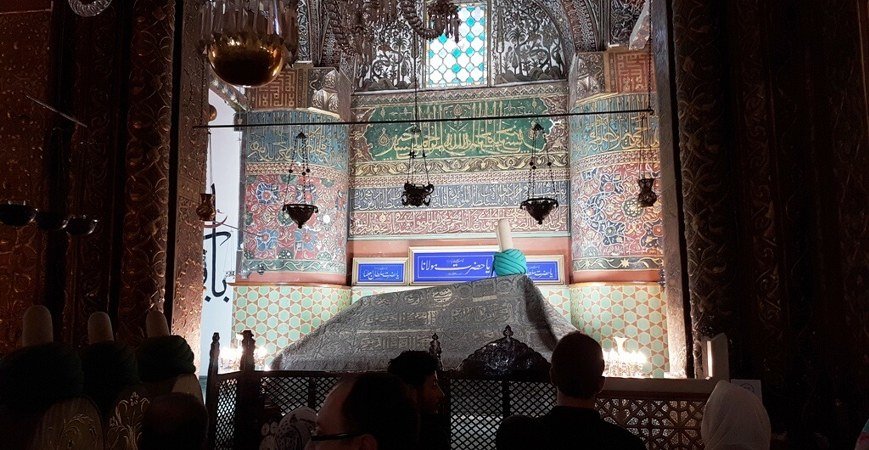
Konya Mevlana Museum – Chapter 2
Konya Mevlana Museum – Chapter 2,
On the west side of the Kulliye of the Mevlana Tomb and Dargah are the Dervish Cells, and on the other three sides are walls. On the western side, the main Dervishes Gate leads into the Mevlana Museum and Tomb. The gate to the south called “Bab-i, Hamusan” leads to the Garden of Souls (Hadikat’ul-ervah) which was once a graveyard, and the door to the north near the Celebi Apartments is called the Celebi Gate.
Entrance: The Main Gate leads into a marble courtyard with fountains for ablutions before entering the mosque. The Tomb Gate is also on this side, its two doors being decorated with Seljuk motifs.
Tilavet Room (Calligraphy Section): The Tomb gate leads into a small domed room, where the dervishes used to read the Koran. This room has now been arranged as the Calligraphy Section and examples of work by famous calligraphers of the Ottoman period in the sulus, nesih, and talk styles are exhibited. A silver door in the Tilavet Room leads to the Tomb. An inscription on the door says that it was made by the son of Sadrazam Sokullu Mehmed Pasha in 1599.
Tomb (Huzur-i Pir): The silver door leads to the Tomb chamber which is called “Huzur-i Pir”. To the right and on the opposite side of this three domed chamber is a fairly high dais on which are sarcophagi. The two dais to the right, each covered by two domes, and the Green Dome over the tomb of Mevlana is called the Kibab’ulaktab, which means the Poles Domes. The six tombs in rows of three which are on the dais under the arches which divide the Semahane or dance hall from the Mescid are called the “Horasan Soldiers.”
You can continue to find more details fort he Konya Mevlana Museum in Chapter 3.